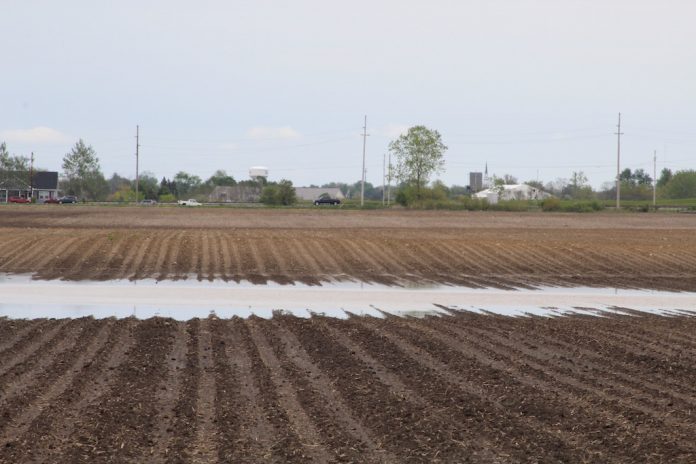On the morning I began writing this, I was in a hotel room in northern Indiana, listening to the staff of the Weather Channel repeat on loop the story of yet another series of deadly storms, as tornadoes and flooding have taken their toll on the states just west and south of me.
I left Ohio knowing our local farmers were trying desperately to plant before this storm system appeared in our neighborhood to further delay an already frustratingly slow planting season. Now I am watching the sky get dark in the east and I know that my friends and neighbors back home will be getting a few more begrudging days off from fieldwork.
The ground up here seems to be a familiar mix of worked fields and no-till, some with the ubiquitous yellow blossoms of cressleaf groundsel, some with cover crops. Only a few appear to have been planted, which I hope makes the guys back in Holmes County feel better about their own progress so far.
However, seeing standing water in the fields as we continued west across US Route 30 made me think about the storms earlier this year that changed the lives of some Nebraska and Iowa farmers forever. Now Oklahoma is reeling from tornadoes and rising rivers, and it makes this watershed coordinator wonder how my little corner of Ohio will respond to any future weather disasters.
I and my co-workers with the Soil and Water Conservation District are tasked with helping our local landowners manage property and natural resources in a sustainable manner for continued use and enjoyment into the future.
Our changing weather patterns are going to require us to work harder and faster about educating and implementing conservation practices that keep the soil out of the water and our water where we need it. That means we need to find and work with those farmers and landowners who know that we don’t have a lot of time left for business as usual.
Soil matters
Fortunately, the rise in the rain gauges has coincided with a rise in understanding how healthy soils in agricultural landscapes can be an incomparable tool in managing water quantity issues.
Healthy soils with proper structure and a balance of mineral and organic matter withstand drought and provide moisture to plants during the dry season. And when the precipitation does come, it is those same healthy soils that absorb water on a scale never matched by exposed and over-worked fields.
As I continue north and west, I am anxious to observe parts of the country I’ve never visited before, and find the familiar and distinct in what folks along the way are doing. I’m not sure that will make me the best road-trip companion, but it will help me relate what we do at home with what’s going on in other parts.
My biggest hope is that we might all be learning from the devastation that has visited other parts of the country, and we use those eye-opening scenarios to do our very best to make sure we are in the best shape going forward to withstand whatever might come our way.
Wherever we call home, it is too precious to allow it to be washed away.













